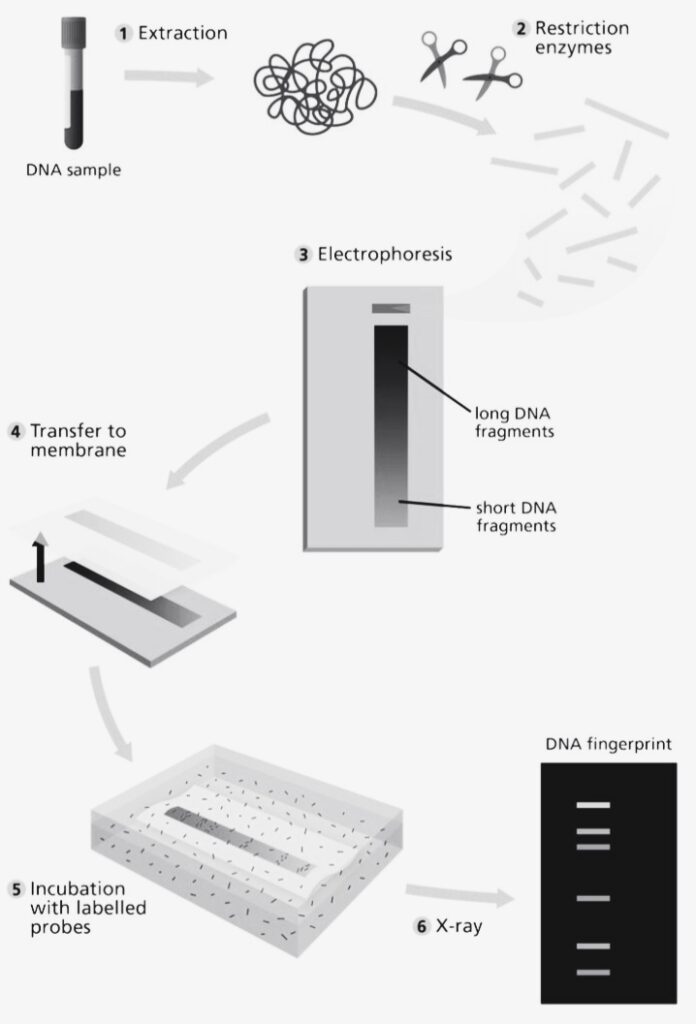Table of Contents
What is DNA Fingerprinting?
DNA fingerprinting also known as DNA testing, DNA typing and DNA profiling.
DNA fingerprinting is a technique to identify an individual and to distinguish between individuals and same species using only sample of their DNA.
The procedure for creating a DNA fingerprinting consists of first obtaining a sample of cells, such as skin, hair, or blood cells, which contain DNA.
Technique
The technique involves three steps. They are:
- Restriction of the DNA and ligation of oligonucleotide adopters,
- Selective amplification of sets of restriction fragments
- Gel analysis of the amplified fragments.
PCR amplification of restriction fragments is achieved by using the adapter and restriction site sequence as target sites for primer annealing

Principle
The principle of these techniques consists of screening for certain DNA sequences that are found in some individuals, but not in others, thus visualising DNA polymorphisms between samples and producing specific DNA fingerprints. Each individual has a DNA profile as unique as a fingerprint.
Applications
- DNA fingerprinting is a technique for identifying and analysing differences in DNA between individuals.
- It is based on DNA sequence variability and polymorphism.
- In forensic science, it is used to identify prospective criminal suspects.
- To prove paternity and establish familial ties.
- To identify and protect the commercial crop and livestock types.
Uses
- It can be used to identify hereditary diseases.
- Hacking becomes a major concern.
- DNA fingerprinting is used in a variety of situations, such as criminal Investigations.
- Show who your parents,siblings and other relatives may be.
- Identify a dead body that’s too old or damaged to be recognisable.
